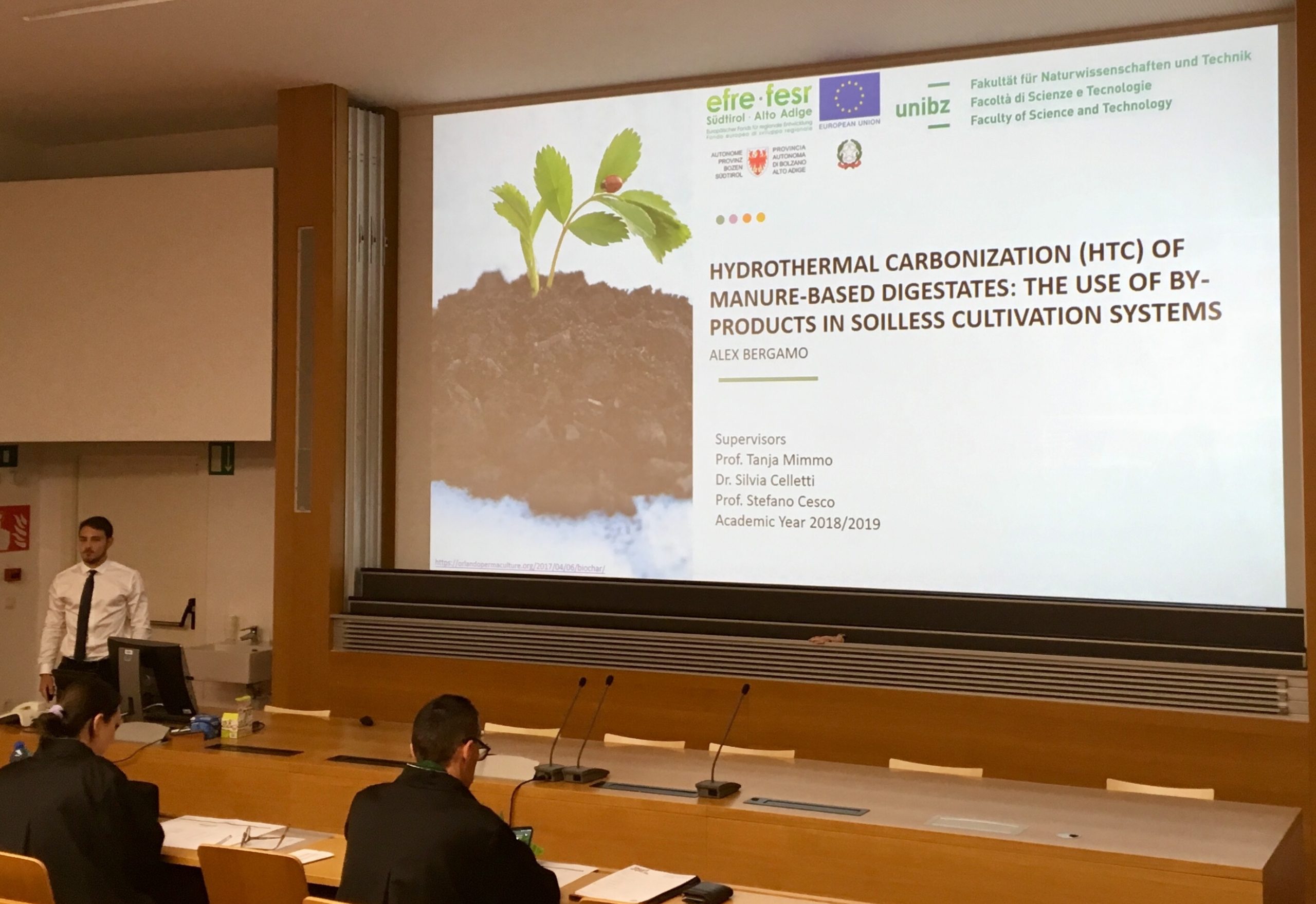[vc_row type=”in_container” full_screen_row_position=”middle” scene_position=”center” text_color=”dark” text_align=”left” overlay_strength=”0.3″ shape_divider_position=”bottom”][vc_column column_padding=”no-extra-padding” column_padding_position=”all” background_color_opacity=”1″ background_hover_color_opacity=”1″ column_shadow=”none” column_border_radius=”none” width=”2/3″ tablet_text_alignment=”default” phone_text_alignment=”default” column_border_width=”none” column_border_style=”solid”][vc_column_text]New advancements in the HB Ponics projects were introduced today thanks to the Master’s thesis project developed by Alex Bergamo. During the discussion of his work called “Hydrothermal Carbonization (HTC) of manure-based digestates: the use of by-products in soilless cultivation systems”, several analyses and results were presented in order to explore the potential benefits of this particular type of biomass recovery systems.
Following is the abstract of the thesis project:
“The application of digestate, which is produced in biogas plants, on agricultural fields is becoming an important challenge and is therefore regulated by European Union directives. Large amounts of digestate may accumulate, especially in areas with high density of biogas plants, and thus are considered as wastes. In order to cope with this issue, the accumulated digestate could be used as feedstock in a Hydrothermal Carbonization (HTC) process from which solid, liquid and gaseous products are formed and could be used for different applications.
In this thesis, the anaerobic digestate, deriving from the biogas Wipptal plant, was treated through a HTC process and the chemical and physical properties of the by-products (liquid – AHLs and solid – hydrochars) were analysed in order to verify their possible use as NS or substrates in Soilless Cultivation Systems (SCS).
The chemical composition of the AHLs was comparable to that of a conventional NS, except for some parameters. Thus, with some adjustments in pH, EC and nutrients, depending on the plant needs, it could be possible to use the AHLs for plant growth. The result of the germination tests led to the conclusion that it can be favourable to mix hydrochar with other growing media (GM) to reduce the phytotoxicity. Treatments of acidification and salt washing of hydrochars might represent a possible solution to reduce pH and EC and thus to use the hydrochars as GM.
Finally, we observed that the temperature of the HTC process had a greater influence on the composition of the by-products than the process time. In conclusion, the digestate could have a high potential to be used as feedstock in HTC processes, if the main goal is to use the hydrochar as substrate and the AHLs as nutrient solution in SCS.”
Author: Alex Bergamo
Thesis Supervisor: Prof. Tanja Mimmo
Other Supervisors: Prof. Stefano Cesco, dr. Silvia Celletti[/vc_column_text][/vc_column][vc_column column_padding=”no-extra-padding” column_padding_position=”all” background_color_opacity=”1″ background_hover_color_opacity=”1″ column_shadow=”none” column_border_radius=”none” width=”1/3″ tablet_text_alignment=”default” phone_text_alignment=”default” column_border_width=”none” column_border_style=”solid”][vc_column_text]

Alex Bergamo during the presentation of the Master’s thesis
[/vc_column_text][/vc_column][/vc_row]


